Marillion's 11th Studio Album, marillion.com is a single album originally released on 18th October 1999.
Current & Notable Release Versions:
1CD Slipcase Version: fans were invited to send passport photographs and 732 of these were then used to make up the artwork for the slipcase. OUT OF PRINT.
1CD Slipcase Version: fans were invited to send passport photographs and 732 of these were then used to make up the artwork for the slipcase. OUT OF PRINT.
1CD Digipack Version: 2016 Madfish mid-price CD digipack edition of marillion.com with an accompanying 8-page booklet.
Double Vinyl Version: 2012 Madfish Vinyl version of Marillion.com. Packaged in a gatefold cover with printed inner sleeves. Re-worked artwork is by original designer Carl Glover.
Download Version: 320kbps MP3 audio download version. Includes an Artwork PDF featuring lyrics & original album artwork.
Marillion.com was one of first of Marillion's internet based initiatives as the band used the web to ask for fans to send them passport pictures of themselves and 732 of these were then used to make up the artwork for the album. 5 of the 9 tracks were mixed by Steven Wilson from Porcupine Tree.
Originally released in both a standard Jewel Case and a special cardboard slip-case version.


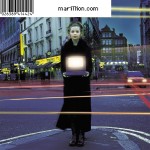
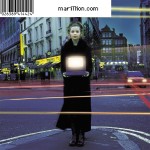
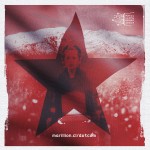
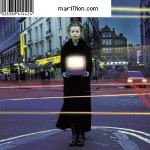
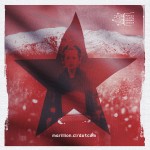
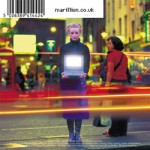
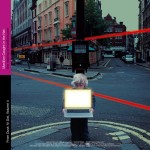

Marillion.com : September 1999
A diary of events recalled from the famously unreliable memory of Mr. H ...
Since 1989 when I joined Marillion life has been constantly frantic. The life of a rock 'n' roll band goes in cycles... there's:
1. The writing of the songs
2. The recording and the mixing of them
3. The promotion (interviews etc.) of the record before it's released
4. Rehearsals for the tour
5. The live shows
At any point in time I am caught up in the middle of one of the above processes. Each one carries with it its own pressures, headaches and rewards. Each process seems to have been followed by the next without a break or any kind of holiday. In theory we do build some time-off into the schedule, but in practice most of the holidays I have ever planned had to be cancelled!
And so it was that we finished the Radiation tour in Paris at the end of November 98, and the following week we were back in England in our studio and centre-of-operations, The Racket Club, scratching our heads and jamming together to see if any happy accidents might take us towards a new song.
When we're writing we usually arrive at the studio around midday and work for four-or-five hours, all together in the main studio area which is set up for both rehearsing and recording. All the noises we make are recorded in stereo straight to Mini Disc. The Mini Disc recordings are listened to later and anything interesting is transferred to a compilation disc which becomes the starting point of the songs. The majority of our songs have been written like this over the years. We spent most of December working in this way before taking a break for Christmas and getting back together in early January.
It was around this time that I had the original idea for "A Legacy". I occasionally come up with song ideas working alone at home. I had been learning to use Steinberg's Cubase VST sequencing and recording software. This is a system which enables recording of audio and MIDI information straight into my laptop computer - a very convenient and portable way of working: you can almost think of it as a studio which you can put under your arm! (I guess the pocket recording studio will soon be a reality..) It was with this system that I developed the ideas behind "A Legacy" and "House" - Marillion's first experiment with a dub reggae groove.
We also had two songs already on the shelf - "Interior Lulu" and "Tumble Down The Years" which we had recorded and mixed during the "Radiation" sessions. We decided not to include the tracks on the "Radiation" album as we thought they both needed more work on the arrangements and then re-recording. We spent several days jamming around the groove of "Tumble Down the Years" before we finally settled on something we all felt would be a major improvement on the earlier version.
"Interior Lulu" was completely rearranged. Steve Rothery showed up one day with a demo of a different approach for the beginning of the song - the fretless bass groove against a conga rhythm - and a new ending emerged from a chord sequence that Mark came up with, married together with the "Primrose Hill" lyric which I had actually written a couple of years ago in Browns café, Oxford. I was a lot happier with the development of the lyric now and the song finally seemed to draw to a more natural end, musically.
"Deserve", "Rich", "Go!", "Enlightened" and "Built-in Bastard Radar" were all taken from musical ideas first hatched during the writing of "Radiation", so most of January, February and March was spent wrestling with the musical "seeds" and trying to come up with finished songs. The process of arriving at an arrangement for a song is not one which comes naturally to us as we don't like to repeat ourselves and are always trying to avoid the obvious "verse/chorus/verse/chorus/middle-8/chorus/end" structures.
By April we decided we were far enough down the line to start recording properly. Our studio has a capacity to record up to a fairly unlimited number of channels of digital audio, and many of the songs were spread across as many as 40 or more tracks of "tape". This means that all the musical instruments, drums and voices, occupy a separate track of tape and can be altered or removed from the finished song at any stage in the recording process until the mix, which is where all the noises are finally placed together in a finished stereo picture.
Production, which is the term given to the overall control of the musical arrangements and the sound of the record, is something we have taken charge of ourselves ever since "This Strange Engine". This involves making many of the arrangement decisions during the rehearsal of the songs, and then having periodic get-togethers during the recording to discuss which direction the song should go. It's a slightly strange way of producing, but it seems to work for us on the whole.
By the end of June we were about ready to mix. We decided that we should bring in our old chum Nick Davis to mix two or three of the most commercially oriented tracks (i.e. the tracks most likely to be played at radio) He prefers to mix away from The Racket Club so we booked a few days at The Forge Studios, up in Oswestry, Shropshire and he mixed "Deserve", "Rich", and "Tumble Down The Years". Meanwhile we had decided to buy a new digital mixing desk for The Racket Club and our own engineer, Stewart Every (who had recorded and mixed "Radiation" and recorded this album) set about mixing the marathon "Interior Lulu".
We returned from Shropshire in high spirits and very happy with Nick's mixes, only to come back to problems at our own studio. To cut a long story short, we didn't like the sound of our new digital desk. It took much tearing out of hair before we decided to go back to our original analogue mixing desk. By this time, Stewart was in need of a break and so an old friend of mine, Trevor Vallis came down to the Racket Club to mix the remainder of the album. Unfortunately fate was to deal us another blow and our old mixing desk developed a problem with it's computer and Trevor's mix sessions were dogged by technical problems. In the end, only "House" remains from the Trevor Vallis sessions.
During all this mayhem, we played four shows at the Zodiac Club in Oxford. As luck would have it, Stephen Wilson (from The Porcupine Tree) came down to see one of the shows. Steve is something of an ace mixing engineer in his own right and it occurred to us to ask him if he fancied a crack at the mix of "Interior Lulu". He agreed and returned us the mix you hear on this album. We were delighted with this mix and he promptly set about mixing the remaining songs. We were by now, up against a tight deadline if we were to release "Marillion.com" this year and so the pressure was really on to finish the mixes in time. The mixes had dragged on through July and into August and right up to our deadline of August 16th (which happens to be my wedding anniversary!).
The following day we mastered the album in London. Mastering is the process of assembling the record into the form you hear when you play it on your CD player. It involves some final refinement to the sound of the mixes and then the songs are placed in their running order (which we had decided upon the day before!) and a finished master is produced to send to the factory which manufactures the CDs and cassettes. We started at 9.30am and finished at 1.30am the following morning!
I drove home and went to bed. That same day, Wednesday 18th, I booked a holiday for two weeks in the Channel Islands followed by Majorca. We departed on Friday 20th. It was to be my first holiday since February 1997.
Viva España!